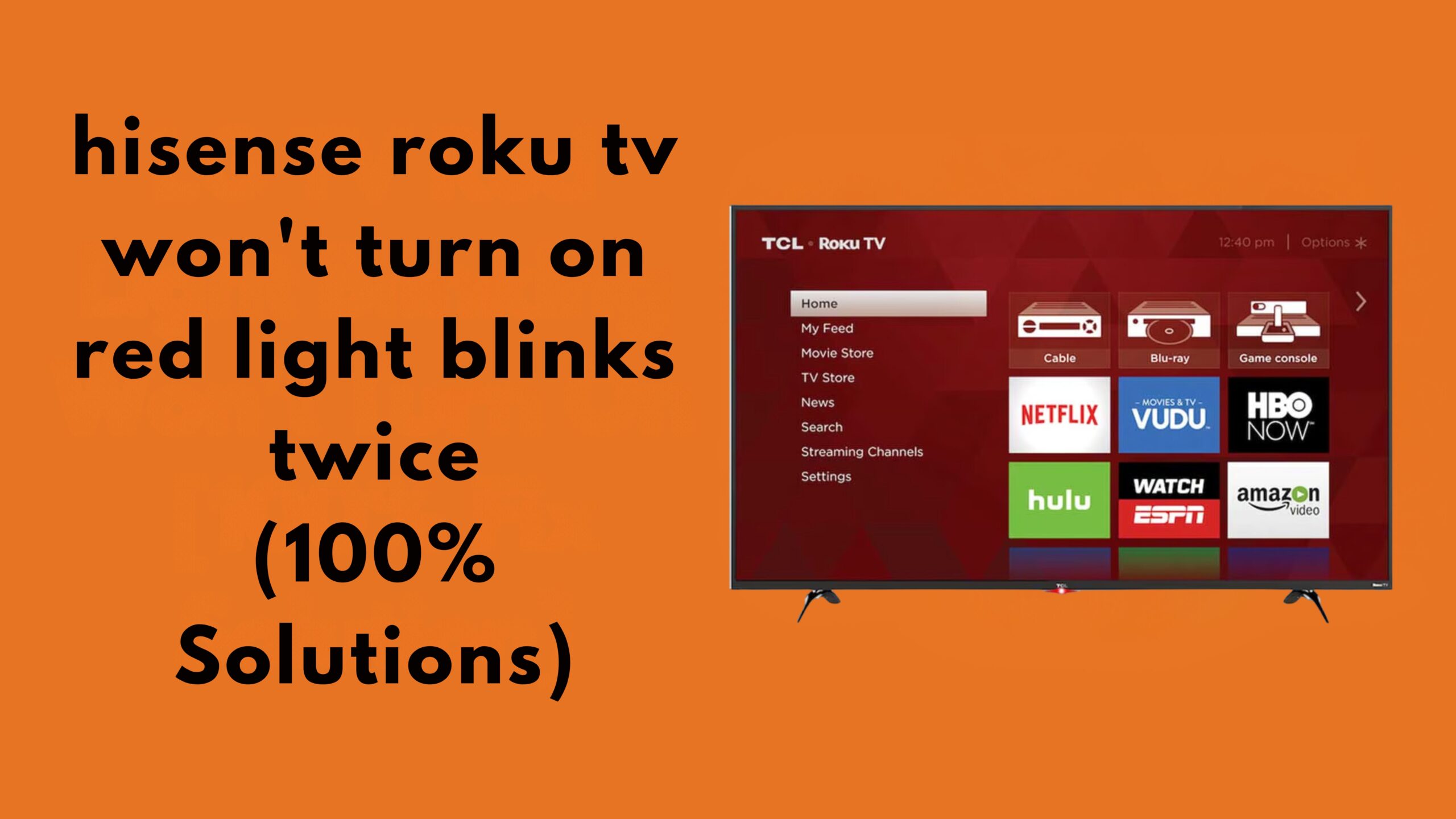The following situation should be familiar to you: You just arranged your new Samsung TV and settled for an enjoyable evening of watching your favorite series.
You reach for the HDMI cable from its compartment, plug it into your console or streaming device, and suddenly.
Your TV switches off! This strange occurrence can be quite disturbing and confusing since all you want is to just watch some good television.
If you are in this situation, which many people are, welcome to the pack.
This article looks into the reasons for this problem and provides recommended help on how to fix the Samsung TV that won’t turn on after connecting HDMI issue.
![Samsung TV turns off HDMI is plugged in [Fixed]](https://4ucartoon.one/wp-content/uploads/2024/10/Samsung-TV-turns-off-HDMI-is-plugged-in-Fixed-300x169.jpg)
Understanding the Problem: Why Does Your Samsung TV Turn Off When HDMI is Plugged In?
However, before going further into the details of the solution.
It is helpful to know some of the possible reasons that your Samsung TV may black out while connecting any HDMI devices.
Some possible explanations could be:
1. Power Supply Issues
We often hear from consumers: “My Samsung TV turns off when I plug in HDMI cable!” Well, this could have many possible reasons.
But one of the main reasons this may happen is because of the TV power supply.
For instance, if more power is needed than the TV can handle, due to the device that is plugged into it, the machine may fail to turn on after all.
2. HDMI Cable Problems
The problem is not always with the TV: Sometimes, the culprit lies within the HDMI cable connections.
Sometimes, HDMI out cables are abused and mishandled, damaging their quality and integrity.
When that happens, it can turn the TV off whenever the device tries to connect. This scenario can get worse if the cable is not properly seated in the port.
3. Firmware Glitches
Software glitches can also be a reason for this scenario.
During attempts to initiate communication with the HDMI device, problems such as out-of-date firmware or bugs can hinder the connection.
4. Device Compatibility
Some devices are not mutually compatible with every kind of television.
If the external device that you are trying to link to, such as a game console or streaming box, does not support the TV, it can lead to disconnection.
![Samsung TV Turns Off HDMI is Plugged In [Fixed]](https://4ucartoon.one/wp-content/uploads/2024/10/Jeep-Grand-Cherokee-Key-Fob-Not-Detected-Causes-Solution-35-e1731051929228-134x300.png)
Samsung TV Red Light Blinking 6 Times (Fixed Solution)
5. Settings Misconfiguration
Also at times, a configuration of a TV or a configuration of a connected device can prevent proper work.
Such settings can include HDMI-CEC settings or picture settings requiring adjustment.
6. Overheating
When the device gets to be connected, it can require more power than the TV is designed to accommodate resulting in the heating effect.
After reaching the internal temperature level above some preset point, the self-protection measures will automatically cut the power to the television.
7. Faulty Hardware
But in rare occasions, the problem can be the hardware malfunction, either in the TV or the connected component.
In such cases, if some parts are out of order, the cut-off may occur when trying to establish a connection via the HDMI cable.
Troubleshooting Steps to Resolve the Issue
After identifying the possibilities, the next thing is to settle on ways of improving the situation. There are troubleshooting steps mentioned below that you can take to resolve the problem of your Samsung TV is indeed turning off when you plug the HDMI on it.
Step 1: Check the HDMI Cable and Ports
First things first, let’s check your HDMI wire. Here’s what you should do:
Examine the Cable:
Inspect the wire carefully for any signs of wear and tear or damage. If you see anything, you may want to think about changing your wire.
Try a Different HDMI Port: They say that sometimes the problem lies in what you are using.
So try connecting the HDMI cable to a different port of your television and check if it still displays the problems.
Use a Different HDMI Cable:
If there is a possibility, use another HDMI wire to test and confirm if the wire is the cause of the problem or not.
Step 2: Power Cycle Your TV and Connected Device
Power cycling can aid in fixing temporary bugs that might be causing the problem.
Turn Off the TV:
Simply unplug the TV from the socket and let it be like that for at least 30 seconds.
Disconnect HDMI Devices:
Suppress the HDMI wire from the television and the other unit that was connected to it.
Reconnect and Power On:
Replug the HDMI cord on both objects and switch the television on.
Step 3: Update Firmware
Many problems can be fixed by updating the firmware of the TV set, including issues that are HDMI related:
Go to Settings:
Access the settings option on the Samsung television.
Select Support:
Look for the ‘Support’ option and select it.
Software Update:
Click on “Software Update” and select the option “Update Now.” Complete the tasks as required.
Step 4:
Adjust HDMI-CEC Settings
If you suspect that the problem may be caused by the HDMI-CEC settings, proceed as follows to configure the correct settings:
Access Settings:
First, open the settings tab and click on the ‘General’ option.
Select External Device Manager:
In this place, search for the HDMI-CEC option which may also be referred to as ‘Anynet+’, in the case of Samsung TVs.
Turn Off HDMI-CEC:
Disable this configuration temporarily and check if this helps to resolve the issue of the television picture still going off even when an HDMI connection is in place.
Step 5: Check for Overheating
If your TV seems to be generating a lot of heat, these are the measures you should take:
Ensure Proper Ventilation:
Ensure that your television is placed in a large area and the equipment is adequately spaced. Do not position the unit in a closed-off area.
Clean the TV:
Over a period of time, every electronic device will get dust on it, and this can lead to it overheating.
Therefore ensure that the vents of the television and other surfaces of the television are cleaned gently using a cloth to ensure smooth airflow.
Step 6: Test with Different Devices
To isolate the issue, attempt the following: Is the issue with the TV or the device that is connected to it?
Try Different HDMI Devices:
Once you locate and connect the HDMI wire to the other devices, try connecting other devices like a game console with HDMI cable to the TV to see if the problem lies there.
Step 7: Factory Reset (Last Resort)
Finally, if none of the methods seem to work, a last resort may be to perform a factory reset on your television:
Access Settings:
Click on the settings option on the television remote.
Select General:
Considering these steps, scroll down the options and select “Reset.”
Confirm Reset:
In closing, as in the case of the previous reverts to factory defaults.
It will require going to settings and then to the appropriate tab with tabs/options/buttons spanning across two levels of hierarchy.
Conclusion
When you are faced with a Samsung TV that continuously shuts down while an HDMI device is connected can be very discouraging.
However, this often can be fixed by completing the steps above.
Do not skip the simple things such as securing the cables and checking the ports, for you may only end up updating the firmware and changing the settings.
If after carrying out these methods the situation does not change, then it would be reasonable to contact Samsung’s customer service or let a professional repair your device.
Frequently Asked Questions (FAQs)
What should I do if my Samsung TV still turns off after trying all the troubleshooting steps?
If you have tried all the angles, it is recommended that you now enlist help from Samsung support or a technician.
Can a faulty HDMI cable cause my TV to turn off?
Yes. If the HDMI cable is poor quality or has broken parts, it may cause the connection to be faulty and cause the TV to power off.
Is there a way to check if my HDMI ports are damaged?
You can check the ports with your naked eye for any damage. Also, using different HDMI cables or HDMI devices can be used to test the ports.
How often should I update my Samsung TV’s firmware?
It is also wise to look for any updates most of the time because of restrictions in performance or before devices are added.
Could my TV be damaged if it keeps turning off?
Shutdowns on a repeated basis can eventually cause damage to hardware over a period of time.
In case the condition still exists after visiting these centers, then going to these centers is an option.
If you have made it this far, do not be discouraged as the next steps fall into the category of trial and error and require time and effort. Best of luck troubleshooting!

![Samsung TV turns off HDMI is plugged in [Fixed]](https://4ucartoon.one/wp-content/uploads/2024/10/Samsung-TV-turns-off-HDMI-is-plugged-in-Fixed-scaled.jpg)
![Why does my smart TV turn off by itself [Solved]](https://4ucartoon.one/wp-content/uploads/2024/10/Why-does-my-smart-TV-turn-off-by-itself-Solved-scaled.jpg)
![How To Stop Hisense TV From Optimizing [100% Working Solution]](https://4ucartoon.one/wp-content/uploads/2024/10/How-To-Stop-Hisense-TV-From-Optimizing-100-Working-Solution-scaled.jpg)
